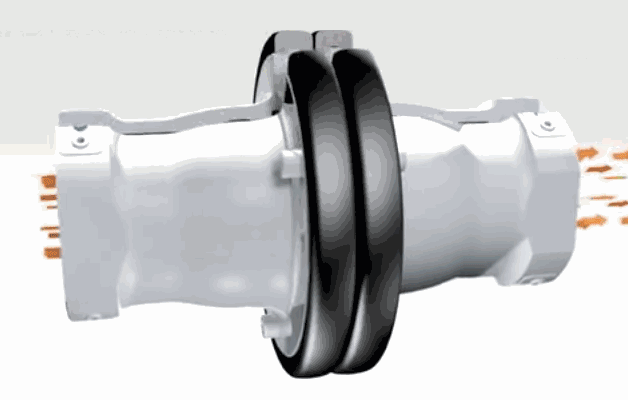When it comes to load and unloading tankers or rail cars safely, operators have two primary options: loading arms and hoses. But which works best?
While there can be times when a hose is the best option for a particular job, loading arms have been designed to improve safety and efficiency and have steadily become the preferred choice for refineries, industrial process plants, and rail and truck terminals.
When deciding between a hose or a loading arm, it’s crucial to choose the option that meets your specific application’s strength, durability, and safety requirements. Hoses are the common choice when transferring less viscous fluids, but considering loading arms at your facility can significantly improve loading safety and efficiency.
Types of Loading Arms

Top loading arms give you the widest range of options for loading and unloading chemicals:
- The basic single arm with a fixed reach can be used for both railcar loading and tank truck application. Many manufacturers choose this option due to its adaptability.
- The scissor arm is also a good fit for both tanker trucks and railcars, as it can handle high flow rates.
- The supported boom arm is ideal for low-maintenance service. Though not suitable for heavy loads, it performs well in high-usage installations.
- The unsupported boom arm is a convenient option when it is impractical to mount a boom arm.
bottom loading arms, while not as versatile as top loading arms, they are the safest option since the operator remains on the ground. The overall loading time is reduced through quicker connections, and there is less turbulence in the tank. Bottom loading arms often feature a powerful swivel with spring capacity, providing longer arm reach and the ability to reach more openings.
Types of Hoses
Vapor recovery hoses are light and flexible option for loading and unloading gasoline, diesel, oils, and other liquids.
Strong and reliable steel braided hoses are often used for hydraulic applications involving extreme heat and temperatures.
Compatible with a wide range of chemicals, composite hoses feature multiple layers of metal, wire, and thermoplastic fabrics. They can also prevent sparking and arc flash incidents that can occur with other metal hoses.
Which Works Best?
When overall safety, durability, and versatility are considered, the benefits of loading arms outweigh the benefits of hoses for the vast majority of loading and unloading applications.
Loading Arms vs Hoses | |
|---|---|
Hoses | Loading Arms |
Hoses require annual pressure tests, are very heavy to use with valves at tanker connection points, and cannot be easily heated or fitted with vent/purge valves. They are difficult to stow when not in use, are prone to wear, and can be driven over or dropped — potentially leading to catastrophic failure. They also pose a tripping hazard for workers.
| Loading arms are more balanced and much easier to move — even by a lone operator. They can reach more openings and are designed to not hit the ground, which protects valves and couplers. They can be left hanging in the air while the operator prepares the tanker truck connection, and can be parked easily and neatly. They can also be fitted with manual or actuated liquid valves, as well as optional purge/vent facilities.
|

Benefits of Loading Arms
Safety with Loading Arms
Safety Features – Modern loading arms can integrated safety features such as dry disconnects, safety breakaways, and overfill prevention:
- Dry Disconnect Fittings – Dry disconnects help reduce spills and fines in loading and unloading. With a variety of quick and dry disconnect fittings available, there are options for any loading application. In addition to preventing spills, large handles make it easier for the operator to handle, while improving safety and efficiency.
- Safety Breakaway Couplings – Protect your facility from the potentially devastating consequences associated with pull-away incidents. In the event of unintended vehicle movement or pull-away, breakaway couplings separate and stop liquid from flowing at both ends of the coupling, protecting personnel and the loading/unloading station.

- Overfill Protection – Loading arms can be supplied with level detection and overfill probes to help prevent unintentionally overfilling a railcar or truck.
Fall Prevention – While hoses can often end up getting left strewn around and presenting a huge falling hazard to your crew, loading arms are much more conveniently stored out of the way and can typically be integrated with existing fall protection equipment for added safety. Loading arms are less likely to leak and created an unwanted spill which further reduces of the risk of slips, trips or dangerous falls.
Less Risk of Sudden Failures
Over time, hoses begin to erode and wear away, particularly when being regularly used to transport corrosive materials. If not carefully monitored, hoses pose a risk for exploding, presenting several layers of danger to everyone on the site. On the other hand, loading arms are relatively low maintenance and have a much longer lifespan without ever having to worry about such a volatile reaction down the line.
Improved Throughput
In addition to improving worker safety, keep the operations moving quickly because loading arms easily, and efficiently connect and disconnect trucks and railcars. Because hoses are not always easy to operate, and due to their size and weight, they can often be difficult to move around as needed and sometimes require more than one worker to move them, and less ergonomic. Top and bottom loading arms are designed with spring counterbalance systems, requiring little force to use, reducing strain and lower the risk of on-site injuries.
With a much longer lifespan favoring loading arms, it is a wise choice for your bottom line both upfront and in the future. If you’re serious about the safety and reputation of your business, dependable loading arms are worth the investment.



























